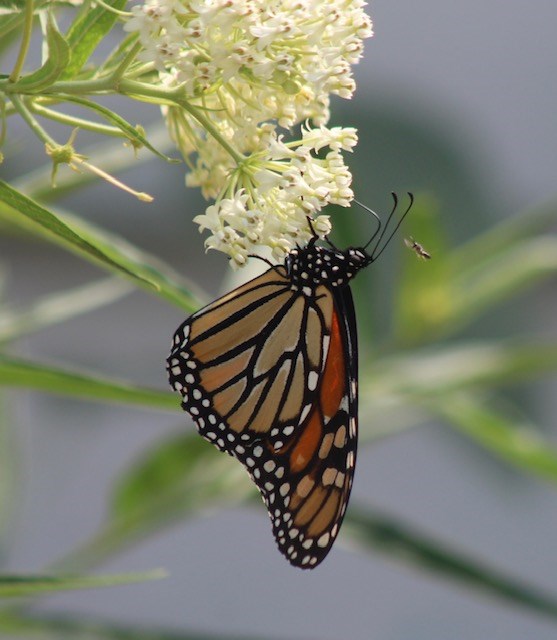REGINA — As summer gears up for the last warm days before Autumn settles in, our prairie Monarch Butterflies gear up for their big migration south.
August is an eventful month for the Monarch on the prairies. milkweed- is in full bloom, starting to develop pods, and the last of this summer’s Monarch caterpillars are completing their metamorphosis into the beautiful iconic butterflies that we all love. This month watchful eyes can be lucky enough to catch Monarchs in all forms of their life stages, and it is one of the best times to give Monarchs a helping hand in the garden.
“Migration takes an enormous amount of energy,” Emily Putz, Habitat Stewardship co-ordinator at Nature Saskatchewan explains, “The adults that emerge now are in a race to get the nutrients they need to survive the journey.”
The summer generation of butterflies will survive up to nine months, journeying 4,000 kilometres south to their wintering site in Mexico where they fast throughout the winter before producing the next generation to begin the flight northward in the spring. Foraging before they begin their flight can give them the boost they need to get going.
“That’s were the public can come in to help” further explains Putz, “lots of people know about the importance of milkweed- to a Monarch caterpillar, but it’s often forgotten that ample late-blooming nectar species are equally important to the adults in late summer.”
If you already have milkweed- incorporated into your yard scape, planting other nectar plants completes the picture for the monarchs and will attract them to your milkweed more readily.
Planting your garden with Monarchs in mind can create a habitat that blooms late into the fall season while benefitting a huge number of our other native insect and bird species alike. When looking to which species to plant, perennial native plants will give Monarchs the energy they need.
“These flowering species are already adapted to our climate, making them low-maintenance once established, there’s also the added benefit that our native pollinators are also adapted to their bloom times and know to look for them.” Putz states.
The large yellow blooms of goldenrod produce right into the fall, as well as golden and purple native asters, purple vervain and pink blazingstar. Planting these species creates an attractive landscape for insects and humans alike. Stay away from tropical species, especially Tropical milkweed, which may be colourful and advertised as butterfly benefitting, but can do more harm than good to Monarchs, spreading wing-deforming disease and tricking them into staying too long before the frost.
Saskatchewan’s Monarchs begin their flight southward by the end of August into September. If you happen to spot one on its journey, or at any time of its lifecycle, please report your sighting to Nature Saskatchewan’s toll-free HOOTline, 1-800-667-HOOT (4668) or email Emily Putz at [email protected]. Every sighting helps fill the knowledge gap of this iconic butterfly in its prairie range.
If you have Monarch habitat with consistent use year to year by this butterfly, consider joining Nature Saskatchewan’s voluntary stewardship program, Stewards of Saskatchewan, which currently partners with 274 private land title holders and managers to help conserve habitat and monitor population numbers of monarchs and other species-at-risk in the province. All Caller and program participant information is kept confidential.
You can no longer count on social media to deliver important news to you. Keep your news a touch away by bookmarking SASKTODAY.ca's homepage at this link.
Here's why you should bookmark your favourites.
Subscribe to SASKTODAY.ca newsletter to get our daily news to your inbox.




